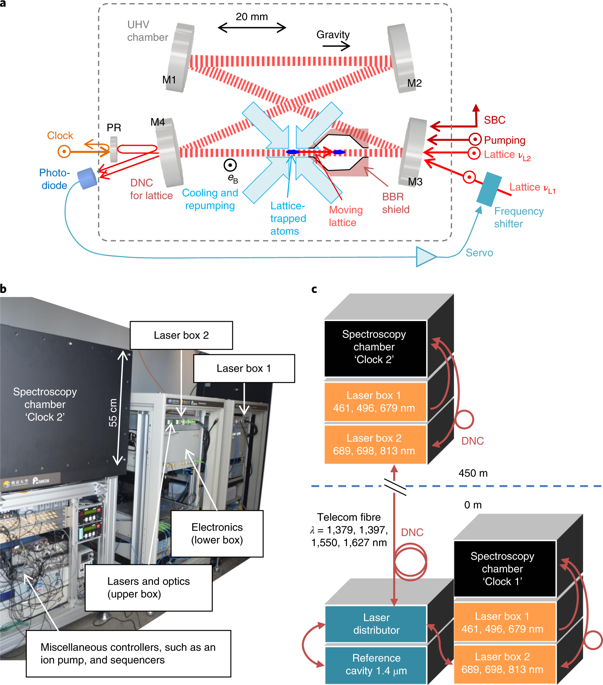Nature Photonics ( IF 35.0 ) Pub Date : 2020-04-06 , DOI: 10.1038/s41566-020-0619-8 Masao Takamoto , Ichiro Ushijima , Noriaki Ohmae , Toshihiro Yahagi , Kensuke Kokado , Hisaaki Shinkai , Hidetoshi Katori

|
A clock at a higher altitude ticks faster than one at a lower altitude, in accordance with Einstein’s theory of general relativity. The outstanding stability and accuracy of optical clocks, at 10−18 levels1,2,3,4,5, allows height differences6 of a centimetre to be measured. However, such state-of-the-art clocks have been demonstrated only in well-conditioned laboratories. Here, we demonstrate an 18-digit-precision frequency comparison in a broadcasting tower, Tokyo Skytree, by developing transportable optical lattice clocks. The tower provides the clocks with adverse conditions to test the robustness and a 450 m height difference to test the gravitational redshift at (1.4 ± 9.1) × 10−5. The result improves ground-based clock comparisons7,8,9 by an order of magnitude and is comparable with space experiments10,11. Our demonstration shows that optical clocks resolving centimetres are technically ready for field applications, such as monitoring spatiotemporal changes of geopotentials caused by active volcanoes or crustal deformation12 and for defining the geoid13,14, which will have an immense impact on future society.
中文翻译:

通过一对可移动光学晶格时钟测试广义相对论
根据爱因斯坦的广义相对论,高海拔的时钟比低海拔的时钟的滴答声更快。光学时钟的出色稳定性和准确性(在1,2,3,4,5 10 -18级)可以测量1厘米的高度差6。但是,仅在条件良好的实验室中证明了此类最新时钟。在这里,我们通过开发可移动的光学晶格钟,展示了广播塔Tokyo Skytree中18位精度的频率比较。该塔为时钟提供了不利条件来测试坚固性,并为450 m的高度差提供了测试(1.4±9.1)×10 -5的重力红移的条件。。结果提高了地面时钟比较7,8,9一个数量级,可与空间实验10,11相提并论。我们的演示表明,解析度为1厘米的光学时钟在技术上已准备就绪,可用于现场应用,例如监视由活火山或地壳变形引起的地势时空变化12以及定义大地水准面13,14,这将对未来社会产生巨大影响。



























 京公网安备 11010802027423号
京公网安备 11010802027423号